Chicken nesting boxes, everything you need to know.
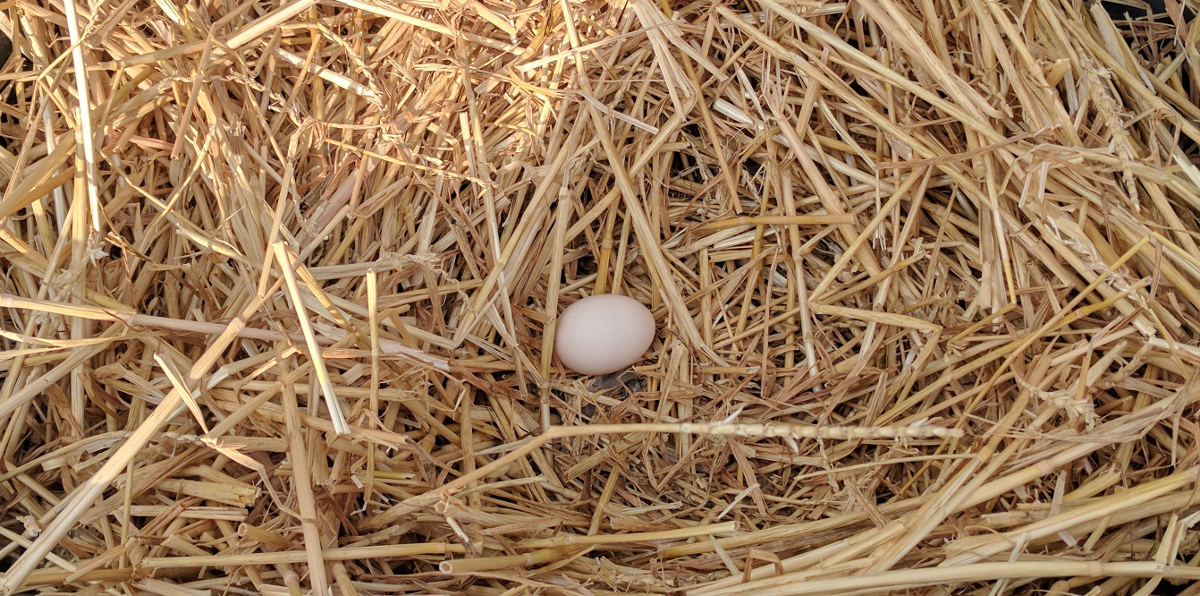
Chickens are quite secretive when it comes to laying eggs, and nest boxes need to make them feel protected. Typically they are built into a low, dark part of a chicken coop to provide chickens with a good sense of security.
Nesting boxes should always be below the level of your roosts and properly secured to keep your flock safe.
Below: A barred rock on a nest in an old barrel.
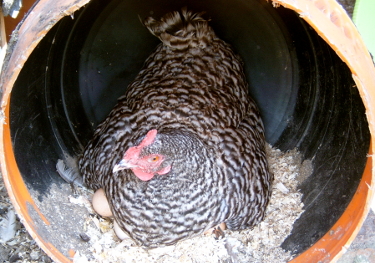
Give your chickens a safe, tranquil spot to lay eggs with homemade nesting boxes. Nesting boxes can be made out of anything. You can use a crate, or even an old drawer from a set of drawers.
Chickens do like to perch before they start nesting in their coop, so provide something for the chicken to roost on as well.
Put some sand, straw, wood shavings or hay in the bottom of the box and you have a comfortable nesting box for your chickens.
If you have a lot of ducks or a mixed flock then make sure you have plenty of floor mounted boxes as ducks prefer them. Ducks don't always use nest boxes but some do.
How many boxes do I need?
Most folks use one nest box for every 3-4 birds and this is the figure I always recommend. If you have a lot of chickens you can get away with one for every 6 or 8.
Personally, I'd rather have one too many than one too few. Unless your area has a year round mild climate then you may get away with one less.
Below: A block of nesting boxes with a sloped top to stop perching.
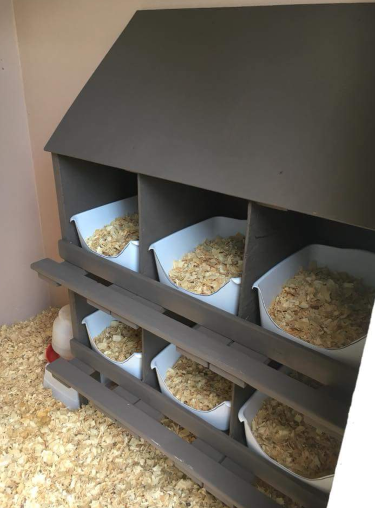
You can also take 1 out if they never use it.
For example if you have 15 hens and 5 or six may want to lay at once in the morning and they can't all have the same box.
Legally you need to provide 1 nesting box per 7 hens.
If I have only 3 to 6 birds in a coop I've started only using 1 to 2 boxes. A flock of 15 chickens should get by with 4 nesting boxes. They like to follow each other.
What about nest boxes for bantam chickens?
It's not uncommon for me to find two or three of my bantams sharing one of the larger nests but I would in general plumb for the same number for bantam chickens as you would for large fowl.
For bantams the boxes should be a little smaller and cosy. They don't have to be, I have bantams that happily use the boxes made for the big girls but I do provide them with a choice.
Sometimes I find my bantams prefer a higher nest, it makes them feel a bit more secure.
How big do nesting boxes need to be?
I've read various dimensions recommended for the boxes and as I have mostly heavy birds like Barnevelders I use 16 inch cubes.
If you have smaller birds 12 X 12 or 14 x 14 is quite sufficient. Anything less than 12 x 12 seems cramped to me.
Keep in mind that the nest boxes don't even have to go in until the birds are around 16 or 17 weeks.
Mine are 16 x 16 and the Orpingtons fit just fine as do my Indian runner ducks, for most there is room to spare but none of the birds seem to mind.
Does the nest box have to have a top?
Nest boxes are normally, well, boxes.
They don't need to have a top on but it does help to keep your ladies feeling comfortable if they are enclosed.
Below: Open top nesting boxes can be fine.

You can see they use these nesting boxes quite happily.
Do chickens need separate nest boxes?
You might not think so given the pictures you've probably seen of hens stuffed in a nesting box but it is always best to plan to give them sturdy comfortable a separate places to lay their eggs.
Can you stack your chicken nesting boxes?
Stacking nesting boxes is fine although typically they'll all wait in line for one or two.
There is no reason that you can't stack your chickens nesting boxes on top of each other. They are sometimes sold in blocks of four or nine which are two or three high respectively.
Vertical nest boxes are OK as well. The hens won't realise they are one above the other when they are on the nest
I have never had any problems with my hens using stacked, vertical or shelf mounted nesting boxes.
I have made use of stackable storage bins as nest boxes in the past. The only thing I would say about plastic is it is very lightweight and should be properly secured to prevent injuries and broken eggs.
Do nesting boxes need walls or dividers?
I have one nest box with dividers and one without. You can always try the community nest box, and then add a divider later if one of your hens is territorial and likes her privacy.
Below: Nesting boxes are best divided up.
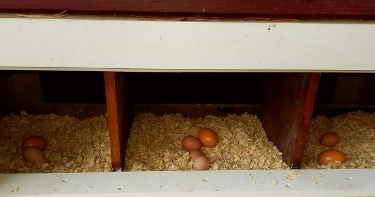
A communal nest doesn't work, because they break the eggs.
Should nest boxes be secured so they can not move around?
Nest boxes need to be secure. Flapping chickens can tip up unsecured boxes trapping birds, causing injuries and breaking eggs.
It does not take much, just a few screws into the shed wall.
It should most definitely be secured down in case anything happens. If its only 1 hen per box they will move much less, being that they don't have to shove around and push for a position. And a general rule with nesting is 1 box per every 3-4 hens you have. They will even take turns sitting sometimes.
What should nesting boxes be made from?
Although wooden nesting boxes are common, plastic and metal containers are less susceptible to bacteria and easier to sterilise. Chickens aren't picky about what the nest box is made off but they are choosy about where they lay eggs.
So you can use household or salvaged materials to design a snug, semi-enclosed nesting space quickly and for almost no money and keep your chickens happy at the same time.
I have a few old barrels that work brilliantly and I have used buckets in the past. I have also used bought boxes.
It doesn't really matter what they are made of as long as your girls feel secure and they suit your circumstances.
How much do nest boxes cost?
If you buy ready made or manufactured nest boxes they will cost between $12 and $36 per nest depending on the materials used to make them with discounts for bulk purchase.
How high off the floor should the boxes be?
So how high off the floor can they be and can the nesting box be too high? Nest boxes can sit on the ground or be elevated.
But keep in mind that nest boxes on the ground take away from use able floor space. I like to elevate them at least 18 inches so that my floor space is open.
If you're stacking, you can always use chicken ladders or perches for the higher boxes.
I have one coop where I had the boxes very high. This coop always had my Game hens in it and they would roost in the eaves and try to lay high up in the corners and the eggs would drop.
Those boxes had to go up quite high. That seems to be where every one of my birds prefer to lay.
Is there any reason they should not be under a window?
Most say nest boxes should be in the dimmest area of the coop. However in one of my chicken sheds the nest boxes sit directly opposite a window, and my girls have never had issues using them.
Can I allow my young growers access to the nest boxes?
Young chickens have a habit of snuggling up into the corners of nest boxes and it's a habit that is very hard to break as they grow up. You should make the effort to keep young birds out of the nesting boxes until they learn to roost.
Sleeping in the nest boxes leads to contamination and soiling of the bedding and eggs and chickens which do not perch properly suffer more from distress.
It is an easy habit to break, simply cover the nest boxes with cardboard at bedtime till the youngster learn to perch on the roosts.
What can I make nest boxes out of?
Historically wood was the material of choice because it is easy to work with, cheap and long lasting. It has the advantage over plastic that it is heavier and more sturdy. Plastic can deteriorate in the sun in just a few years.
Metal is cold and can rust but is generally a good choice. It can be bolted together to form large blocks of nesting boxes for the large flock.
The reality is your chickens will not mind what the nesting boxes are made from provided it meets their basic needs.
Whichever containers you choose, make sure they are clean and dry before proceeding. Keep in mind that wooden containers are more likely to retain moisture and develop bacteria, so they require more frequent cleaning.
They need to be sturdy as chickens need hard wearing boxes. You can use old plastic trays, pet carriers, crates, litter boxes, and wine barrels to make nesting boxes, depending on the sizes of your chickens and the size of what you plan to use.
If you don't have salvageable materials on hand, buy low-cost 5-gallon buckets with lids. They typically have about 0.75 to 0.77 cubic feet of interior space, providing adequate depth and height to accommodate most chicken breeds.
Whichever containers you choose, make sure they are clean and dry before proceeding. Keep in mind that wooden containers are more likely to retain moisture and develop bacteria, so they require more frequent cleaning.
How to make a bucket nesting box:
Cut an Entry Hole:
Open buckets are functional as nesting boxes, but keeping the lids on prevents bedding from spilling out whenever the chickens enter and exit. Use a utility knife or another cutting tool to remove approximately two-thirds of each lid's upper surface.
The uncut portion should form a small half-moon shape. Sand any rough edges, and if desired, trim them with duct tape or electrical tape to protect chickens from snags.
Mount the Nesting Boxes:
If you plan to install the nesting boxes in one location permanently, consider mounting them on the wall of the chicken coop. Drill two to three evenly spaced holes along the diameter of the bottom of the bucket.
Position the buckets about 1 foot above the ground, and line them up side by side so that their edges just meet. Screw the buckets to the horizontal blocking that lines many chicken coops.
If the coop has flat walls, you may need to attach your own 2X4 batons first.
Make sure to evenly distribute the weight of the nesting boxes by resting the lowest level on top of a supportive surface. Like a board over cinder blocks.
Can I hang the nest boxes on the wall?
Yes you can. The nest boxes can be anywhere as long as they are secure and the hens can get into them easily.
Consider arranging the nesting boxes on shelves. If you anticipate moving the chicken nesting boxes around frequently, shelving is a better option for organising your equipment. Choose any suitable shelving with sufficient depth to accommodate the buckets.
Buy a metal utility shelf or cubbyhole-style rack. Alternately, try removing the backing of an old bookcase, or stack crates with the bottoms cut out. You can also build a simple shelf by using plywood for each level and using 2-by-4 boards to create the side supports.
Nesting boxes are stacked two high. The girls like them just fine that way
What do I fill chicken nest boxes with?
Fill the boxes with your preferred bedding to make a comfortable nesting space for your chickens.
You can always try a few different bedding's out in your boxes till you find one the hens like.
Whatever bedding you choose for your nesting boxes you should give it a regular dusting of DE or Diatomaceous earth. It is best used a little at a time and often to prevent problems.
Below: Diatomaceous earth is excellent for keeping nests pest free.
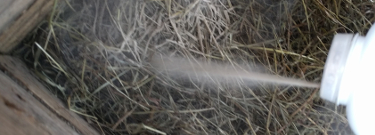
Pine shavings are one of the most popular options because they offer better moisture resistance, compared to hay and straw. Put a lid on each bucket, with the entry hole positioned at the top.
I use sand, it holds no parasites and is cheaper and longer lasting than compostable alternatives and you would be surprised how easily the hens take to it and make themselves a little depression for laying their eggs in.
Place a few fake decoy eggs in your nests to encourage your chickens to lay their own.
The only nest box filling I would not use is shredded paper, It gets compacted into a solid mess in no time at all.
Do nesting boxes need to be in the coop?
Yes, ideally the nest boxes need to be in your coop.
Laying away from the the chicken coop is normally enough of a problem if you have free range hens without putting the nesting boxes out and about as well.
If you keep confined hens in a run it may be fine to have nest boxes in the run but they are better kept indoors away from brightness and activity.
Do chickens sleep in their nesting boxes?
They can do but you should not allow it as it makes for dirty nests that will need cleaning all the time.
My nest boxes in my main coop were there from day one. Some find that the youngsters try to roost inside them, but mine never did. If yours do, then just block them off with cardboard.
You can solve this problem by making sure the roosts are higher than the nest boxes. Chickens prefer to be up high to perch and roost.
Chicks that have been raised by a mother hen tend to roost properly.
Tips for looking after chicken nesting boxes:
- Make sure they are easy to clean.
- Chicken nesting boxes need a lip on the front to keep the nesting material and egg inside.
- They need to be accessible.
- Collect the eggs regularly to prevent broody hens and broken eggs.
